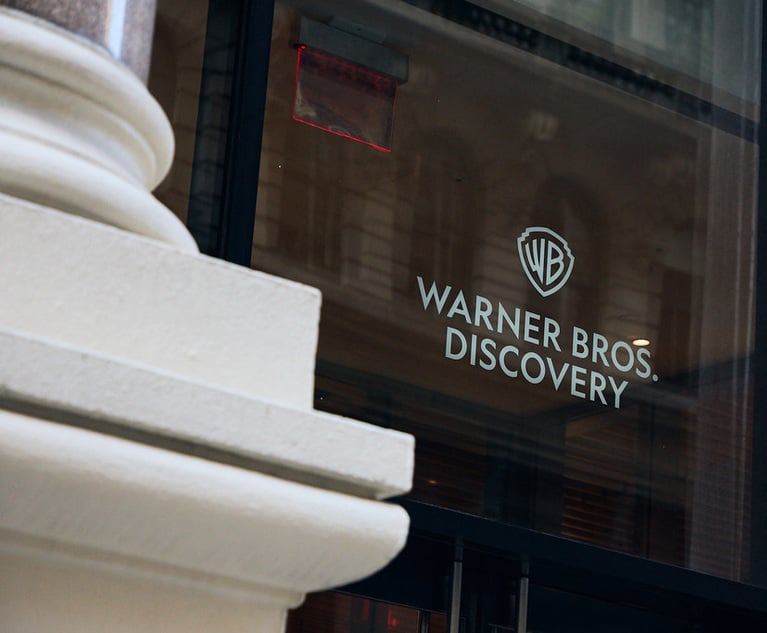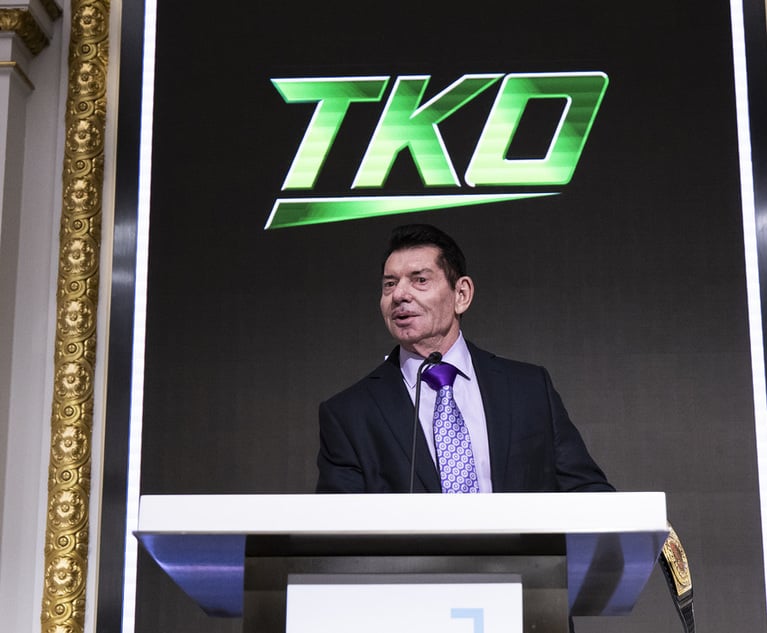IP: Letters of Protest
Trademark owners should consider low cost Letters of Protest an important part of their U.S. trademark enforcement programs.
June 14, 2011 at 10:55 AM
6 minute read
The original version of this story was published on Law.com
Trademark owners should consider low cost Letters of Protest an important part of their U.S. trademark enforcement programs. In certain circumstances, the United States Patent and Trademark Office (USPTO) allows interested parties to prevent the registration of another's pending trademark application with a “Letter of Protest.” A Letter of Protest may be submitted during the ex parte trademark examination procedure thereby potentially avoiding the need for a formal, contentious, and costly opposition proceeding. Through the Letter of Protest procedure, interested parties can bring information that is relevant to the registrability of another's mark but that may otherwise be overlooked, to the USPTO's attention without violating the ex parte nature of the trademark examination procedure.
A Letter of Protest may be submitted to the USPTO in several common circumstances. For example, a likelihood of confusion between a pending mark and either a U.S. trademark registration or a prior-pending trademark application is sufficient grounds to support a Letter of Protest. In addition, if the applied for mark should not be registered because it is descriptive or generic when used in connection with the applicant's line of business, a Letter of Protest directed to these issues may be well-received by the USPTO. Pending trademark infringement litigation involving the applied for mark and a federally registered mark, or a prior-pending application, may also form the basis of a Letter of Protest seeking suspension of the examination procedures during the pendency of the litigation. Technically, a Letter of Protest can be submitted on nearly any grounds that may cause the USPTO to refuse registration, suspend examination, or require amendment to an application prior to registration, but the most common bases are likelihood of confusion with registered marks and prior-pending applications and issues involving descriptive and generic marks.
Grounds that are not appropriate for a Letter of Protest include likelihood of confusion claims that are based on common law trademark rights (as opposed to such claims based on a federal registration or a prior-pending federal trademark application), disputes over ownership of the applied-for mark, allegations of fraud and any Protest based on mere argument or opinion without objective evidence and legal reasoning in support. A Letter of Protest with these flaws will be denied.
To initiate a Protest, the protesting party merely sends its Letter, along with evidence, to the Office of the Deputy Commissioner for Trademark Examination Policy. The deputy commissioner decides whether a Letter of Protest should be granted and, in order to preserve the integrity of the ex parte trademark examination procedure, the Examining Attorney does not see the Letter of Protest itself and is not consulted on whether the Letter of Protest should be granted. The Letter of Protest should be concise and in the format and style of a letter rather than a brief, focusing on a simple statement of the grounds and providing compelling objective supporting evidence.
If a Letter of Protest is submitted before the subject application is published for opposition, then it will be granted if “the evidence is relevant and supports any reasonable ground for refusal appropriate in ex parte examination.” The standard is heightened, however, if the protestor waits until the subject application is published for opposition before submitting the Letter. In that case, the Letter will only be granted if it would be “clear error” not to consider the grounds and evidence. Due to this heightened post-publication standard, it is generally a good idea to submit a Letter of Protest prior to publication when the standard of review is relatively lenient and the chances of for success greater.
To that end, it is beneficial to engage a trademark watch service to notify the trademark owner of any problematic new trademark application filings. This early, pre-publication, notice of filing will help the trademark owner to submit a Letter of Protest well before publication thereby taking advantage of the lower “relevant” standard and increasing its likelihood of success in contrast to the post-publication “clear error” standard. Additionally, early notice is important because a Letter of Protest neither stays nor extends the time allowed for filing a trademark opposition proceeding, which is 30 days from the date of publication. A Letter of Protest is typically decided within 30-60 days so in some scenarios the deadline to file an opposition could occur before the Letter of Protest is decided, potentially negating the cost-savings of the Letter of Protest.
Regardless of the standard under which a Letter of Protest is reviewed, if the Protest is granted, then the grounds of the objection, but not the Letter itself, will be provided to the Examining Attorney who is assigned to the pending application, along with the evidence provided by the protestor. Accordingly, the evidence is of utmost importance and the most effective evidence will clearly relate to and support the grounds for the Protest without the need for additional explanation. For example, objective third-party evidence of descriptiveness such as competitor advertising, articles and other materials clearly demonstrating the primary significance of the mark in the minds of consumers would likely be persuasive on its own, even without the accompanying explanation laid out in a Letter of Protest. In contrast, if mere argument is offered in support, the Letter of Protest will most likely be denied. If the Letter of Protest is denied by the deputy commissioner, nothing will be forwarded to the examining attorney.
When a Letter of Protest is granted under the lesser “relevant” standard, the examining attorney may decide, in his or her discretion, whether to issue a refusal to register the application in reliance on the grounds and evidence. When a Letter of Protest is granted under the more stringent “clear error” standard, the Examining Attorney must issue the refusal to register. In either case, when the Examining Attorney issues a refusal to register, the applicant may rebut the refusal to register and the Examining Attorney will take any such rebuttal into consideration when deciding whether to issue a final refusal to register. If registration is ultimately refused, then the protestor succeeded in preventing registration without engaging the applicant in an adversarial and relatively expensive trademark opposition proceeding.
A Letter of Protest does not preclude the protesting party from later filing a trademark opposition proceeding if the Letter of Protest is denied or if the applicant ultimately defeats the Examining Attorney's ensuing refusal to register. The trademark opposition procedure is entirely separate and it involves different fact-finders, namely the administrative judges of the USPTO's Trademark Trial and Appeal Board as opposed to the examining attorneys of the USPTO. However, in the event that the applicant overcomes a refusal to register that arose from a Letter of Protest, it will be forewarned and practiced at countering that same issue if later met with an opposition based on the same grounds. In most cases, however, a Letter of Protest will prove advisable since it can effectively deny registration
This content has been archived. It is available through our partners, LexisNexis® and Bloomberg Law.
To view this content, please continue to their sites.
Not a Lexis Subscriber?
Subscribe Now
Not a Bloomberg Law Subscriber?
Subscribe Now
NOT FOR REPRINT
© 2025 ALM Global, LLC, All Rights Reserved. Request academic re-use from www.copyright.com. All other uses, submit a request to [email protected]. For more information visit Asset & Logo Licensing.
You Might Like
View All


SEC Puts Beat Down on Ex-Wrestling CEO Vince McMahon for Not Reporting Settlements
3 minute readTrending Stories
- 1'It's Not Going to Be Pretty': PayPal, Capital One Face Novel Class Actions Over 'Poaching' Commissions Owed Influencers
- 211th Circuit Rejects Trump's Emergency Request as DOJ Prepares to Release Special Counsel's Final Report
- 3Supreme Court Takes Up Challenge to ACA Task Force
- 4'Tragedy of Unspeakable Proportions:' Could Edison, DWP, Face Lawsuits Over LA Wildfires?
- 5Meta Pulls Plug on DEI Programs
Who Got The Work
Michael G. Bongiorno, Andrew Scott Dulberg and Elizabeth E. Driscoll from Wilmer Cutler Pickering Hale and Dorr have stepped in to represent Symbotic Inc., an A.I.-enabled technology platform that focuses on increasing supply chain efficiency, and other defendants in a pending shareholder derivative lawsuit. The case, filed Oct. 2 in Massachusetts District Court by the Brown Law Firm on behalf of Stephen Austen, accuses certain officers and directors of misleading investors in regard to Symbotic's potential for margin growth by failing to disclose that the company was not equipped to timely deploy its systems or manage expenses through project delays. The case, assigned to U.S. District Judge Nathaniel M. Gorton, is 1:24-cv-12522, Austen v. Cohen et al.
Who Got The Work
Edmund Polubinski and Marie Killmond of Davis Polk & Wardwell have entered appearances for data platform software development company MongoDB and other defendants in a pending shareholder derivative lawsuit. The action, filed Oct. 7 in New York Southern District Court by the Brown Law Firm, accuses the company's directors and/or officers of falsely expressing confidence in the company’s restructuring of its sales incentive plan and downplaying the severity of decreases in its upfront commitments. The case is 1:24-cv-07594, Roy v. Ittycheria et al.
Who Got The Work
Amy O. Bruchs and Kurt F. Ellison of Michael Best & Friedrich have entered appearances for Epic Systems Corp. in a pending employment discrimination lawsuit. The suit was filed Sept. 7 in Wisconsin Western District Court by Levine Eisberner LLC and Siri & Glimstad on behalf of a project manager who claims that he was wrongfully terminated after applying for a religious exemption to the defendant's COVID-19 vaccine mandate. The case, assigned to U.S. Magistrate Judge Anita Marie Boor, is 3:24-cv-00630, Secker, Nathan v. Epic Systems Corporation.
Who Got The Work
David X. Sullivan, Thomas J. Finn and Gregory A. Hall from McCarter & English have entered appearances for Sunrun Installation Services in a pending civil rights lawsuit. The complaint was filed Sept. 4 in Connecticut District Court by attorney Robert M. Berke on behalf of former employee George Edward Steins, who was arrested and charged with employing an unregistered home improvement salesperson. The complaint alleges that had Sunrun informed the Connecticut Department of Consumer Protection that the plaintiff's employment had ended in 2017 and that he no longer held Sunrun's home improvement contractor license, he would not have been hit with charges, which were dismissed in May 2024. The case, assigned to U.S. District Judge Jeffrey A. Meyer, is 3:24-cv-01423, Steins v. Sunrun, Inc. et al.
Who Got The Work
Greenberg Traurig shareholder Joshua L. Raskin has entered an appearance for boohoo.com UK Ltd. in a pending patent infringement lawsuit. The suit, filed Sept. 3 in Texas Eastern District Court by Rozier Hardt McDonough on behalf of Alto Dynamics, asserts five patents related to an online shopping platform. The case, assigned to U.S. District Judge Rodney Gilstrap, is 2:24-cv-00719, Alto Dynamics, LLC v. boohoo.com UK Limited.
Featured Firms
Law Offices of Gary Martin Hays & Associates, P.C.
(470) 294-1674
Law Offices of Mark E. Salomone
(857) 444-6468
Smith & Hassler
(713) 739-1250







